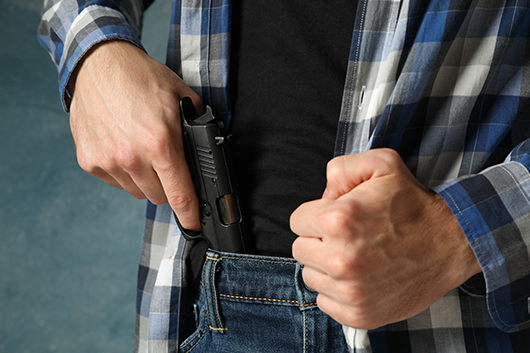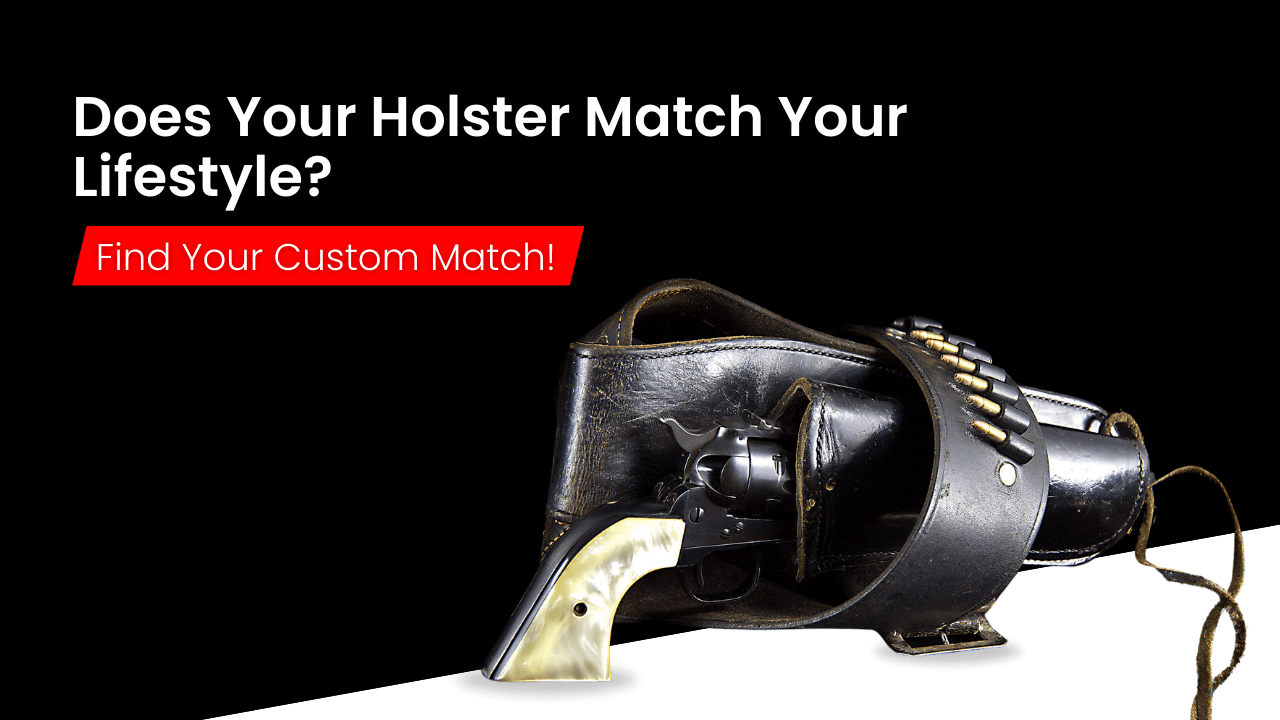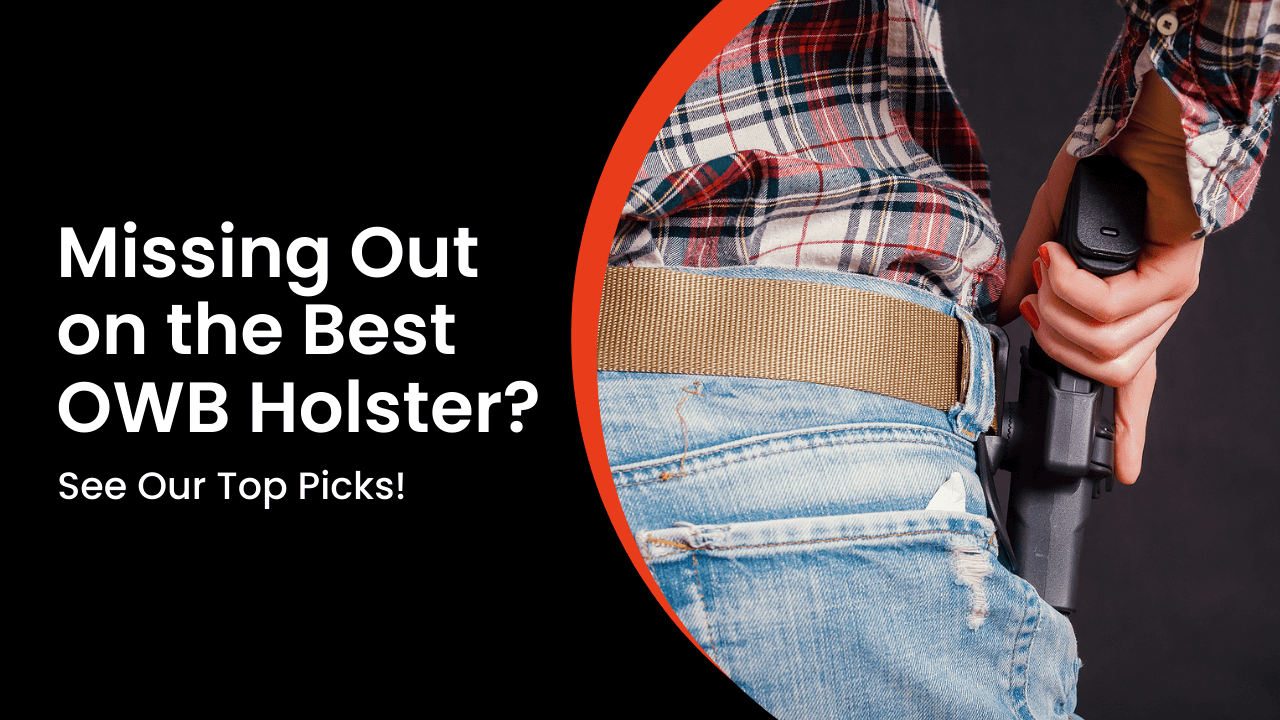Pros vs. Cons of Appendix Carry
Dec 2nd 2020
Appendix inside the waistband carry (AIWB) is an increasingly popular method of carrying a gun concealed, particularly among women and younger gun owners. This method places your carry pistol or revolver at the front of your waistband. In other words, your gun is directly in front of you, instead of your hip or the small-of-your-back.
As with every concealed carrying method, there are pros and cons to appendix carry. Knowing about them may help you determine if appendix carry is the right method for you.

Pros of Appendix Carry
Appendix carry is the modern-day version of a carry method pioneered in the 19th century, referred to as “belly gun toting.” The term “belly gun” referred to a specific kind of short-barreled firearm which often lacked sights, usually a converted single-action revolver or a derringer. Today’s belly gun equivalents are modern snub-nosed revolvers and subcompact semi-automatics.
The core principles and advantages of 19th-century belly gun toting are reflected in today’s AIWB carry. This method allows a gun owner to carry a concealed handgun at the front of their body, eliminating the need to reach around their body for a hip or back holster, particularly from a sitting position.
Today, concealed carry holsters designed explicitly for appendix carry are available, allowing you to wear most concealed carry handguns safely and more comfortably.
In the 19th century, belly gun toters did not use holsters and instead carried their weapons tucked directly into the waistband, only secured by the belt. This was a very unsafe carry method then and is even more so with modern firearms.
Modern AIWB holsters are shaped for this purpose and often have a taller ride height than typical strong-side hip or 3 o’clock position IWB holsters, allowing you to get a better grip on your weapon when it is time to draw it.
You also do not have to carry at the 12 o’clock position exactly. It’s possible to offset your holster to 1 or 11 o’clock, which would make your drawing style somewhat like a cross-draw.
It is also faster to bring your handgun out of its holster from an appendix position than from an IWB hip holster. Your support hand has less distance to travel when lifting your shirt and concealment garment out of the way, and your dominant hand and arm do not have to twist into a potentially uncomfortable position when reaching for your grip.
Additionally, a potential attacker will find it harder to steal your concealed weapon if you appendix carry it, as they would have to reach into the front of your pants rather than your back or one of your sides.
Some shooters, mainly women, may have difficulty finding clothes that allow them to concealed carry comfortably while using a regular inside the waistband holster, especially at the strong-side hip position.
If you are one of these shooters, the appendix position may be a solution that can help you keep your dress light while still allowing you to carry. A light shirt, sweater, blouse, or similar cover garment will more easily hide a gun and holster in the appendix position than in other positions.

Cons of Appendix Carry
Appendix carry requires an appendix carry holster. Using a standard strong-side hip IWB holster for appendix carrying may compromise the secure retention of your firearm. It may also be even less comfortable, as hip holsters have a different cut and shape designed to accommodate for the side of your body rather than the front.
Some shooters, particularly men, may find appendix carry uncomfortable and unsettling because this carry method involves holstering a firearm with the muzzle directly pointed toward the crotch or a thigh.
Overweight shooters may also find unmodified appendix carry methods to be less comfortable. Although this carry method is not impossible for gun owners of larger stature, experimenting with ride height, carry positions, angle, and choice of holster and handgun may be necessary to find a comfortable carry position that will work both when standing and seated.
However, it is not guaranteed to work for you even if you put in the effort to experiment. Your particular body shape simply might not agree with your carry style choices.
Depending on the choice of handgun, the barrel may come in direct contact with these body parts, particularly while sitting. Part of the reason why the belly guns of the past had such short barrels was to mitigate this issue. While very compact handguns are available today, with proper sighting systems and a higher capacity than the revolvers and derringers of the 19th century, appendix carry may still limit your carry handgun choices.
Practicing proper drawing and reholstering when appendix carrying is not just a strong recommendation; it is an absolute necessity, even more so than with any other carry method. You need more time and practice to safely draw from an AIWB holster, particularly under stress.
Remember that you do not need to reholster your handgun as quickly as you draw it. There is no shame in looking at your hands and being slow and methodical. It is better to be slower and safe than to rush and risk a negligent discharge.
Trigger finger discipline should never be neglected. It’s part of the basic rules of gun safety to never put your finger on the trigger until ready to shoot. But when appendix carrying, it is paramount, especially if your handgun of choice is a striker-fired semi-auto pistol without a manual safety, such as a Glock. You may have to select a different firearm or a different carry method if you cannot compromise on one or the other.
Appendix carry leaves no room for errors or mistakes. If you commit a negligent discharge with a hip holster, the worst-case scenario may result in sending a bullet through the outside of your thigh.
With an AIWB holster, the worst-case scenario involves the consequences of a barrel pointed at your crotch or one of your femoral arteries. Both situations are dangerous and life-threatening, but the latter is far more lethal.
If you rely on practical or combat shooting techniques for your everyday concealed carrying, you may find that appendix carry is banned by particular practical shooting organizations, such as IDPA, while other associations like USPSA do allow it. Research your specific organization’s rules and adapt accordingly.
The Takeaway
Incognito Concealment produces high-quality Kydex holsters and magazine carriers for everyday carry pistols and revolvers, whether you prefer appendix IWB, strong-side IWB, or OWB. We are proud to manufacture all our products entirely in the USA.
If you have questions about finding a holster for your preferred carry method or want more information about any of our products, call us at (586) 333-4240.











